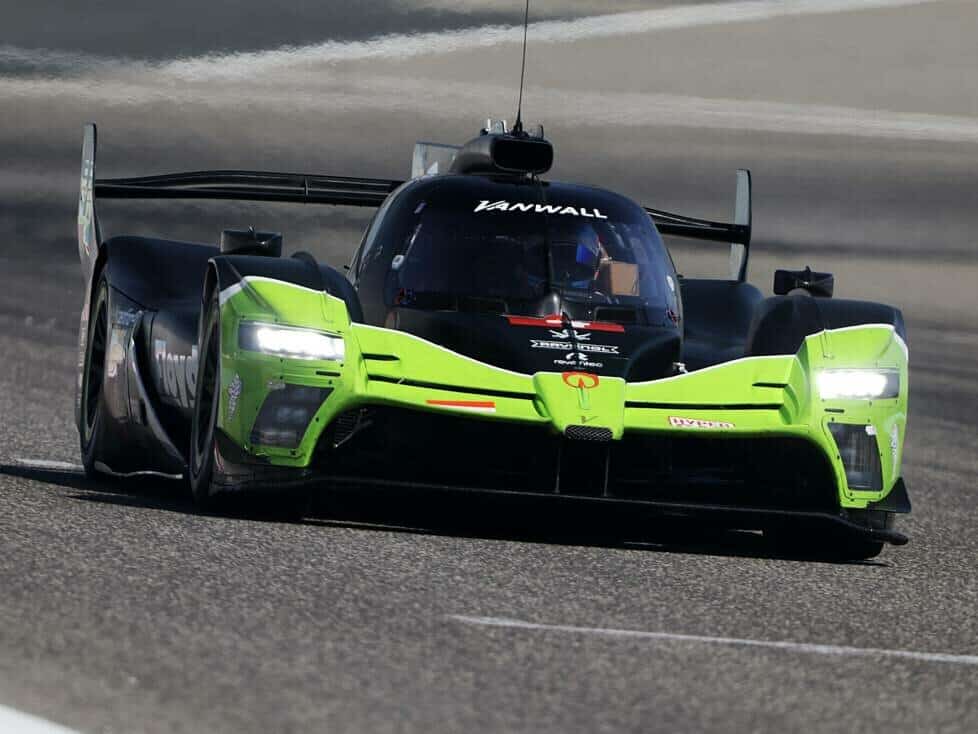Vanwall is completely overhauling the Vandervell 680 and wants to return to the WEC with turbo power in 2025 – changes to the Le Mans hypercar in almost all areas
After its involuntary withdrawal from the World Endurance Championship (WEC) for the 2024 season, Vanwall wants to return in the 2025 season with a completely revamped hypercar
The Le Mans hypercar Vanwall Vandervell 680 will undergo a major update. The centerpiece is the installation of the Pipo engine, which has been in service in Glickenhaus Racing’s SCG 007 in recent years.
The 3.5-liter V8 turbo engine is intended to remedy the performance problems that the team had to contend with last season. The naturally aspirated Gibson engine with a displacement of 4.5 liters and a V8 high-revving concept was unable to reliably achieve the required power curve.
According to Kolles, it lacked up to 60 kilowatts, i.e. a good 80 hp. The Pipo engine was once built for a hypercar regulation in which the engine had to deliver up to 870 hp. This was later corrected downwards in the course of the LMH-LMDh convergence. The engine is therefore over-designed to the required maximum of 707 hp (520 kW) and not under-designed like its predecessor.
Such a major intervention in the vehicle concept naturally entails far-reaching changes. The monocoque is retained, so Vanwall saves on new crash tests. But almost everything that can be changed has been altered on the periphery.
This starts with the air intake and the cooling system, as an intercooler has to be accommodated. The exhaust also has a different outlet angle to the Gibson unit. This results in various changes to the bodywork, which in turn affect the aerodynamics.
In addition, Vanwall will optimize the aerodynamics of the bodywork itself in order to make better use of the specified performance windows
Debut originally planned for Qatar
The new engine is coupled with a new gearbox, which now has seven forward gears instead of six. All of this in turn requires a complete reprogramming of the electronics and a reinstallation of the hardware components. The Cosworth control unit will be brought up to date.
Another major innovation will be the introduction of a brake-by-wire system, which is intended to provide more stability in braking zones. In addition, brake discs and pads will be used in different specifications. This and changes to the engine and transmission cooling will also result in adjustments to the brake cooling.
The mechanics are also being scrutinized. A new steering system is accompanied by new axle kinematics. However, this has less to do with the engine than with the experience gained from the 2023 WEC season.
In the late summer of 2023, after the engine damage at Le Mans and Monza, the decision was made to change the engine with all its consequences. Originally, Vanwall wanted to be ready for the 1,812 kilometers of Qatar 2024.
However, following the cancellation of the 2024 WEC, the cost-intensive express production of the components was halted. the rollout of the car, which is currently under construction, is imminent, assures Colin Kolles.
Vanwall only fielded one vehicle in 2023. However, Motorsport.com has learned that the WEC wants to introduce a rule for 2025 that requires each manufacturer to field two cars. Kolles is very positive about this and would also be prepared to bring two cars to the start.
The more difficult task will of course be to convince the selection committee to consider the team again. The WEC is planning to increase the number of starting places to 40 for 2025. However, should the two-car rule come into force, Aston Martin would have to field two hypercars instead of one as previously planned





